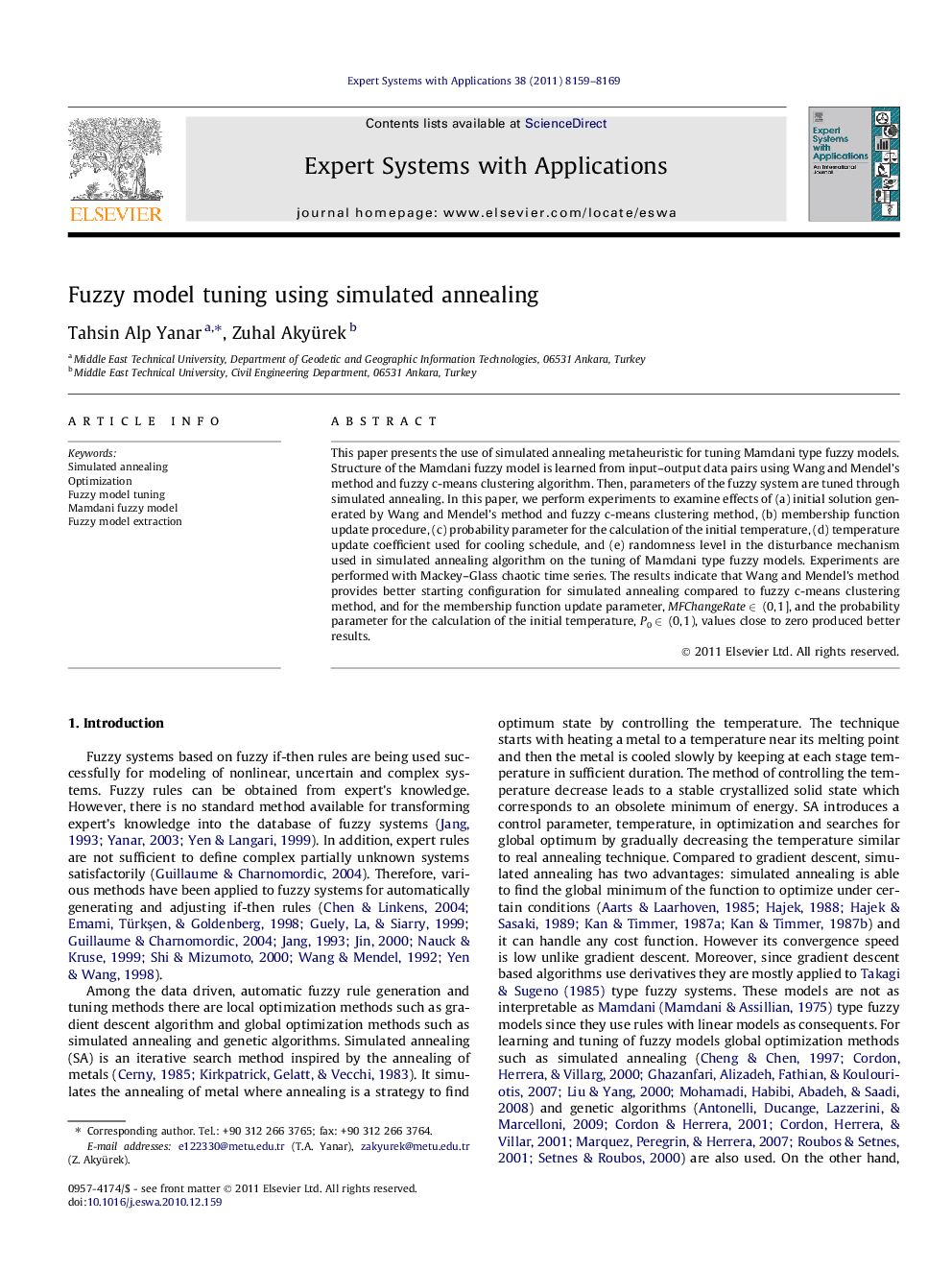| Article ID | Journal | Published Year | Pages | File Type |
|---|---|---|---|---|
| 385638 | Expert Systems with Applications | 2011 | 11 Pages |
This paper presents the use of simulated annealing metaheuristic for tuning Mamdani type fuzzy models. Structure of the Mamdani fuzzy model is learned from input–output data pairs using Wang and Mendel’s method and fuzzy c-means clustering algorithm. Then, parameters of the fuzzy system are tuned through simulated annealing. In this paper, we perform experiments to examine effects of (a) initial solution generated by Wang and Mendel’s method and fuzzy c-means clustering method, (b) membership function update procedure, (c) probability parameter for the calculation of the initial temperature, (d) temperature update coefficient used for cooling schedule, and (e) randomness level in the disturbance mechanism used in simulated annealing algorithm on the tuning of Mamdani type fuzzy models. Experiments are performed with Mackey–Glass chaotic time series. The results indicate that Wang and Mendel’s method provides better starting configuration for simulated annealing compared to fuzzy c-means clustering method, and for the membership function update parameter, MFChangeRate ∈ (0, 1], and the probability parameter for the calculation of the initial temperature, P0 ∈ (0, 1), values close to zero produced better results.
Research highlights► We present the use of simulated annealing for tuning Mamdani type fuzzy models. ► Initial fuzzy models are learned from input-output data. ► We examine the effects of parameters used in the simulated annealing algorithm. ► Experiments are performed with Mackey–Glass chaotic time series. ► Wang and Mendel’s method provides better starting configuration.
